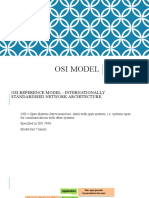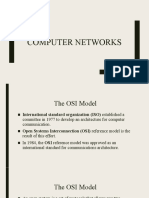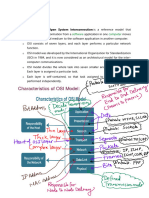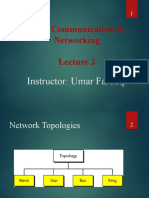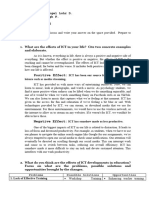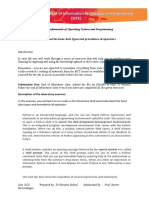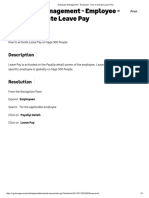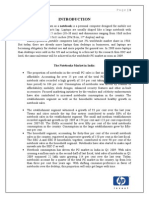0% found this document useful (0 votes)
59 views2 pagesOSI Model
The document summarizes the 7 layers of the OSI model:
1) Physical layer which converts digital bits into signals to transmit over local media like cables.
2) Data link layer which controls how data is placed onto and received from the media using techniques like media access control and error detection.
3) Network layer which is responsible for routing packets between sender and receiver using logical addressing and determining the best path through techniques like routing protocols.
Uploaded by
poopypants546332Copyright
© © All Rights Reserved
We take content rights seriously. If you suspect this is your content, claim it here.
Available Formats
Download as PDF, TXT or read online on Scribd
0% found this document useful (0 votes)
59 views2 pagesOSI Model
The document summarizes the 7 layers of the OSI model:
1) Physical layer which converts digital bits into signals to transmit over local media like cables.
2) Data link layer which controls how data is placed onto and received from the media using techniques like media access control and error detection.
3) Network layer which is responsible for routing packets between sender and receiver using logical addressing and determining the best path through techniques like routing protocols.
Uploaded by
poopypants546332Copyright
© © All Rights Reserved
We take content rights seriously. If you suspect this is your content, claim it here.
Available Formats
Download as PDF, TXT or read online on Scribd
/ 2



















